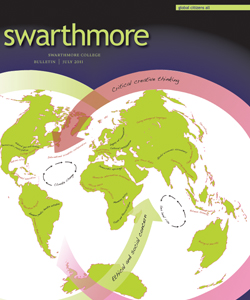Chernobyl Witness
(additional photographs)
(Click on photo to enlarge most images)
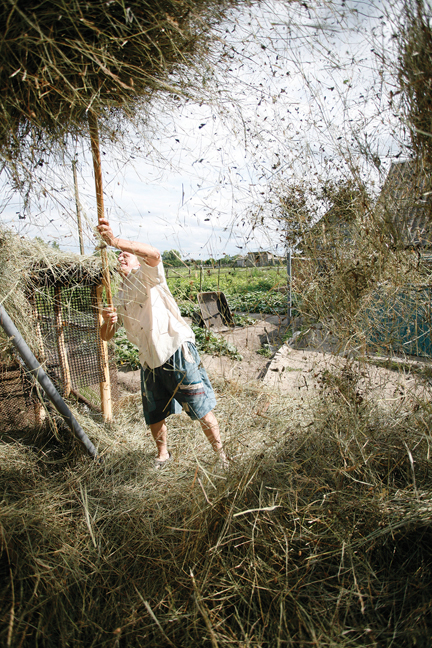
Petro Konovalenko, head of the village council in Sukachi, has shed his suit to help neighbors pitch hay into their barn. Half the people of Sukachi are Chernobyl evacuees. In the 11 days after the accident, everyone within 19 miles of the plant was evacuated. People in Sukachi remember bus convoys speeding by all night long—the first sign that something was amiss. The Soviet government did not admit to the accident until a week later, after reports appeared in international media.

Maria and Mikhalo Urupa offer visitors apples from the tree behind their house in Parishev village, 10 miles downstream from the Chernobyl plant. They are samosels—resettlers who returned illegally to the Exclusion Zone just months after the accident and have lived here since. Maria was born in Parishev in 1935 and can’t imagine living anywhere else. They survive on subsistence farming and small government pensions. “If I was to leave this place, I’d die already,” Maria says.
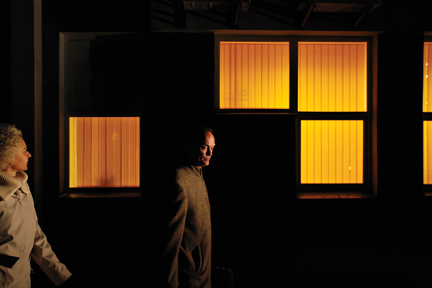
Sergii Yudin and his wife Irina return home from work at the Chernobyl plant. Sergii is a superintendent in the heat and underground communications shop; Irina is a communications engineer. Daily life in Slavutych revolves around the power plant’s schedule. In winter, Chernobyl personnel walk to the Slavutych train station each morning before dawn and get back after dark. None of them know how long their jobs will continue or what the city will do once they are laid off.
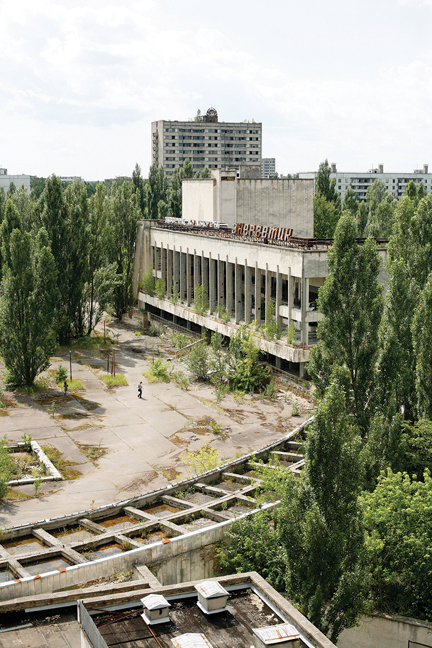
The central square of Pripyat is overgrown with trees but devoid of residents. The entire city of nearly 50,000 was evacuated one day after the accident. Pripyat gets two kinds of visitors. Chernobyl has become, surprisingly, one of Ukraine’s hottest tourist destinations. Sightseers visit every week on guided excursions into the Exclusion Zone. But when former Pripyat residents visit, they search quietly, struggling to match old memories with the scene before them.
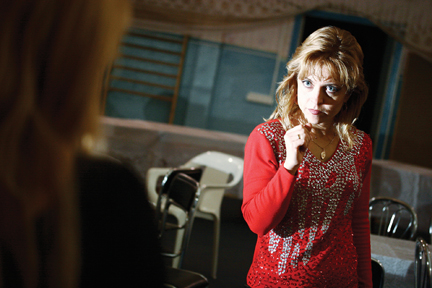
Dance and music teacher Lesya Kostenko leads a rehearsal at the Chernobyl Community Center in Borodyanka. Thousands of Chernobyl evacuees were resettled in Borodyanka, 48 miles south of the nuclear power plant. Unlike those in towns closer to Chernobyl, Borodyanka residents report that they now look at the accident and aftermath as a historical event rather than an ongoing problem.
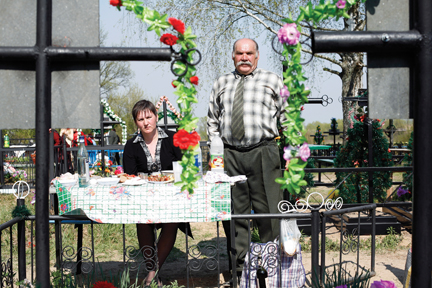
On April 26, the anniversary of the Chernobyl accident, Vasily Fedirko pays tribute to his wife’s parents, who are buried in Pirogovichi village. Every year at Easter time, Ukrainians return to their native villages to eat a ceremonial meal in the cemetery and remember those who have died. When evacuees from near the Exclusion Zone return for one day to visit their abandoned homes and graves, former neighbors reminisce and feast together.
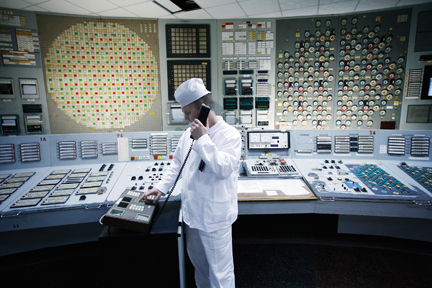
“It’s depressing. Soon my job will cease to exist,” says Oleg Ryazanov, control room shift supervisor in the Chernobyl First Block. As long as nuclear fuel remains in temporary storage in the reactor halls, Oleg and his peers will sit in an empty room watching inactive machinery and making sure nothing happens. The wall of lights once showed the status of each of the graphite control rods in the shut-down reactor’s core. Just down the hall is the burnt-out Fourth Block control room, where a combination of design flaws and human error triggered the 1986 accident during a late-night safety test.
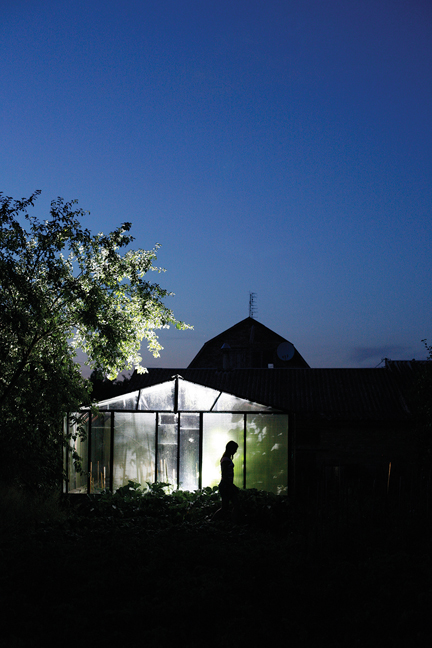
As night falls in Ivankiv, teenager Anya Ignatyuk helps her parents Vlodya and Viktoria to water the massive vegetable garden sprawling outside their homemade greenhouse. Viktoria, a radiation dosimetrist, prefers to grow as much of the family’s food as possible. She does not trust the cleanliness of crops sold in the market. “Many people deliberately don’t check their food because they don’t want to know,” she says.
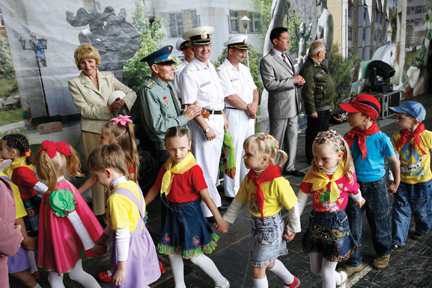
The city of Slavutych celebrates its annual Day of the City with a parade and a concert on the central square. Slavutych was built after the 1986 accident to house relocated workers from the Chernobyl plant. The city’s residents have invested a lot of their shrinking budget into arts and educational programs for their children, but funding is tight now. Slavutych used to receive substantial support from the power plant, until it stopped producing electricity in 2000.
Return to story: Chernobyl Witness
 Email This Page
Email This Page